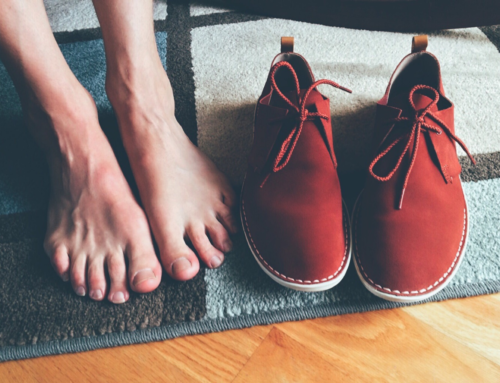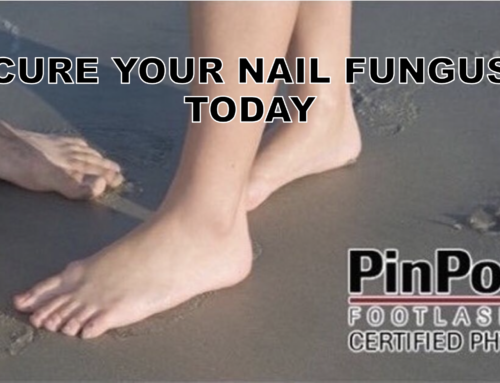If you’ve started treatment for toenail fungus, you might be wondering: “Can I still paint my nails while treating nail fungus, or will it slow down my progress?” It’s a common question, especially if you feel self-conscious about discoloration or thickened nails. Here’s what you need to know to balance treatment success and your desire to keep your nails looking nice during the healing process.
Yellow/white nails
They can be caused by onycholysis, the separation between the nail and the nail bed. You see the color change due to the air beneath the nail. When you develop this condition, try not to clean under the nail and simply cut the nail short. Persistent onycholysis makes your nail susceptible to fungal infection. Seek professional help if the condition does not get better after a reasonable period.
When you have a nail fungus, your nail can also become yellow. In this case, you can also have your nails thickened and brittle. You may also feel pain. This condition is contagious, so don’t hesitate to contact podiatrists to get help at the early stage.
Red/black nails
The color can be due to blood under the nail. This normally occurs after nail trauma (i.e., slamming a finger in the door). The blood-colored area will usually grow out with the nail. If the blood clot stays in the same spot, you may want to see a doctor to confirm it is not melanoma, a skin cancer with pigmented cells.
Green nails
You can get green color nails infected by Pseudomonas bacteria, which grow under the nail. The infection may cause an unpleasant smell on the nail. As a treatment, you can trim the nail short every month and try not to clean it for a few months. Also, thoroughly dry your nail after showering and avoid soaking your nail in water. If the condition does not go away for a reasonable period, contact your doctor.
Why You Might Want to Cover Up
Toenail fungus can cause nails to become:
- discolored
- Thick or crumbly
- Misshapen or ridged
It’s understandable to want to hide these changes with polish, especially during sandal season in [location]. However, painting over fungal nails can make treatment less effective and may even allow the fungus to worsen underneath.
How Nail Polish Can Interfere with Treatment
Regular nail polish and even some antifungal polishes can:
- Trap moisture under the nail, creating an environment where fungus thrives.
- Block medications or laser light from effectively reaching the fungus under the nail plate.
- Make it difficult to monitor progress, since discoloration and changes in thickness are hidden under polish.

Is it possible to get nail fungus from nail polish?
After wearing nail polish for an extended period of time, you are creating a protective layer over your nails that traps in moisture and allows the fungus to thrive. The environment allows you to essentially get infected.
On the other hand, when you decide to wear nail polish, your nails are shielded, so you are less likely to notice any physical changes or differences. When your nails get thicker or discolored due to nail fungus, it can be a while before you notice. The infections can get much worse if not treated immediately; they can switch from a yellowish tint to a dark brown or black with increased thickness and cracking.
Sharing Nail Polish
Another way is caused by sharing nail polish with someone who already has nail fungus. The fungal spores become embedded on the brush, and when applied, they will be transferred via touch. It can be stored inside the nail polish bottle and can be applied to noninfected nails to increase the chances of getting infected.
Other Treatment Options
Topical solutions have a very low success rate. This is because the solution does not penetrate all the way under the nail. All the fungus must die to be cured. It can take up to a year to see any results
Oral medication is more effective than topical solutions. Although oral medication can cause liver toxicity. As a result, you would have constant blood tests throughout the duration of taking medication.
If You’re Using Laser Nail Therapy
If you’re undergoing laser treatment with our highly acclaimed PinPointe™ FootLaser®, we recommend keeping nails bare during your treatment series. Here’s why:
- Laser needs clear access: Polish can block or scatter the laser light, reducing effectiveness.
- Easier to monitor improvement: You and your provider can see the gradual clearing of the nail as new, healthy growth pushes out the damaged nail.
- Better hygiene: Keeping nails clean and dry helps prevent reinfection during treatment.
Why We Recommend Laser Treatment
At our clinic, we use the PinPointe™ FootLaser® because it is:
- Safe and effective, targeting fungus under the nail without harming the surrounding skin.
- Non-invasive, requiring no needles or oral medications.
- Quick, with treatment sessions typically under 30 minutes.
- Medication-free, ideal if you wish to avoid drug side effects or interactions.
Laser treatment helps stop the fungus so your healthy nail can grow in clear; skipping polish during treatment helps you get the best possible results.

What About After Treatment?
Once your treatment is complete and your nail is clear, you can safely return to polishing if you wish. To avoid reinfection:
- Use antifungal sprays or powders in your shoes.
- Wear moisture-wicking socks to keep feet dry.
- Avoid sharing nail tools or polish with others.
- Choose reputable, clean salons for pedicures.
We Offer Free Consultations with Our Medical Doctors
If you’re unsure whether you have toenail fungus or need guidance on treatment, we’re here to help. We offer free consultations with our foot doctors to:
- Examine your nails and confirm whether fungus is present
- Answer your questions about laser treatment
- Provide practical nail care guidance during treatment

Ready to take the next step toward clear nails and sandal confidence?
Get in contact with us today at 800-672-0625 to schedule your free consultation and let our team guide you through effective, safe treatment for toenail fungus, so you can get back to polished nails with peace of mind.




